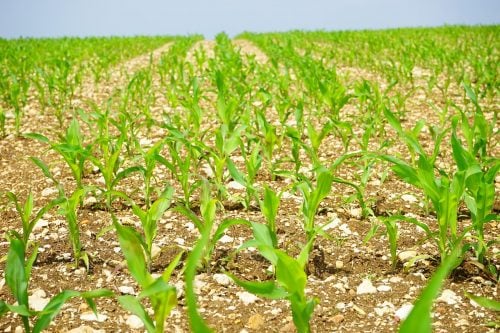The United Nations (UN) have released new agricultural guidelines to help member countries make decisions about farming that are in keeping with their climate change pledges.
The Paris Agreement aims to limit global temperature rise to “well below 2 degrees Celsius” above pre-industrial levels.
 Nine out of ten developing countries have included adaptation of agriculture in their plans of how they intend to meet their climate change pledges. Image: pixabay-1365877
Nine out of ten developing countries have included adaptation of agriculture in their plans of how they intend to meet their climate change pledges. Image: pixabay-1365877
However, the agreement also enshrines an accompanying goal, which is to ensure that there is an “adequate adaptation response” in securing this limit.
It recognizes, for example, the need to safeguard food security, end hunger, and the fact that climate change is already having an adverse effect on agriculture.
Nine out of ten developing countries have included adaptation of agriculture in their Intended Nationally Determined Contributions – that is, the broad aims of how they intend to meet their climate change pledges.
The new agricultural guidelines – issued by the UN’s Food and Agricultural Organization (FAO) – aim to help developing countries implement these pledges and ensure that not only do they include agriculture in their national adaptation plans, but also make it more adaptive and resilient.
The idea is to steer change “at a bearable pace for those who depend on related activities for incomes, livelihoods and food security.”
The guidelines are intended for use by national planners and policymakers, experts and officials from agriculture, forestry, and fisheries authorities, as well as representatives of the UN and bilateral donors.
Major producer of greenhouse gases
As a major producer of greenhouse gases, agriculture – including forestry and fisheries – is an obvious target for reducing the human contribution to climate change.
However, there are some challenging factors to take into account in accomplishing this daunting task.
For instance, to meet the demand of a global population destined to reach 9 billion by 2050, our world will need to be producing 60 percent more food by then than it was in 2006.
Add to this the fact that climate change is already changing agriculture: it is degrading production capacities, and eroding the natural resources and ecosystems that sustain them.
In such a context, it is important that countries make well-considered decisions that help the agricultural sector adapt in a sustainable way.
Refill the dried-up lake or manage the shore-side forest?
Take, for instance, the decision of what to do when a lake dries up – such as what has happened to Lake Faguibine in northern Mali, which has been mostly dry since the mid-1970s.
Should the decision be to refill the lake or focus on managing the surrounding forest in a sustainable way?
The decision is a complex one and the new agricultural guidelines would suggest that it takes into account medium and long-term perspectives and the wants and needs of different stakeholders.
The large-scale stakeholders, who focus on infrastructure, will likely say fill up the lake. But the local community may take an ecosystem view, and favour sustainable management of the forests.
Julia Wolf, Natural Resources Officer at UN’s FAO and co-author of the agricultural guidelines, says:
“Medium to long-term adaptation planning is crucial to build climate resilience and food security for future generations. The agriculture sectors, often the economic backbone of developing countries, need to be a key driver and stakeholder. The guidelines are set out to address the key issues, entry points and steps to take.”
Agriculture, forestry, and other land use account for 24 percent of global greenhouse gas emissions – which from this sector arise mostly from cultivation of crops, livestock, and deforestation.
However, it should also be noted that around 20 percent of emissions in this sector are offset by ecosystems (for instance in soils) that remove CO2 from the atmosphere.

